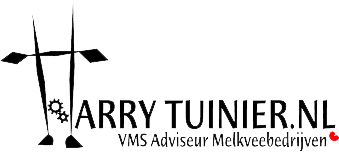What is needed for the highest daily production per VMS.
We often hear interesting stories about the average daily production of a milking robot.
Sometimes 1500 liters per day, sometimes more than 2000, some regularly reach 2500 liters and a few are milking even more than 3000 liters per robot per day.
What do you think is necessary and important to achieve a high production per milking robot?
Here I would like to add experiences and practical tips from you, so I hope for responses from you:
If this is successful, I would also like to make a list with more tips from you, for example about increasing the number of visits to the milking robot, keeping the somatic cell count low, …
Some examples of mine what is needed for high daily productions per VMS:
- High-yielding livestock, high persistence
- High quality roughage.
- Pay extra attention that newly calved heifers learn to visit the VMS soon after calving and are given time / space for this.
- Many cows with 2+ lactations
It is therefore the intention that this list is getting longer.
I would like to add your practical tips and experiences to this!
Added by you:
- Punctually claw care policy (for dry period and after negative energy balance period) by the skilled person.
- Short interval between calves
- Reward high-yielding cows (concentrate, space, …)
- Often push feed, also at night
- Generous, comfortable lying places






